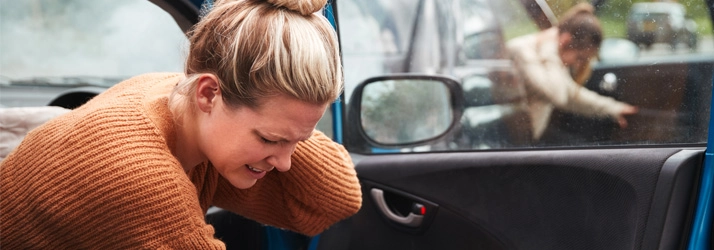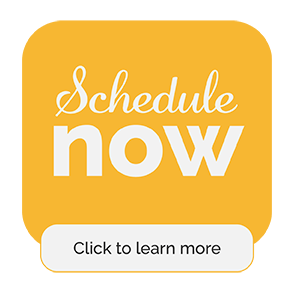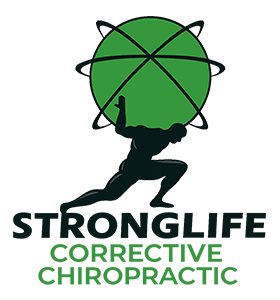Auto Accident Injury Care in Lithia FL

CBP®-Guided Structural Rehabilitation After a Car Crash: Get Checked—Even If You Feel “Fine”
Low-speed collisions can still shift spinal joints and ligaments, leaving the neck straighter (hypolordosis) or even reversed (kyphosis). These structural changes often don’t hurt right away, but they can drive headaches, neck/back pain, nerve irritation, dizziness, and poor function weeks to months later. Prompt evaluation after a car crash in Lithia FL helps identify—and correct—these issues before they become chronic.
Why STRONGLIFE Uses CBP® for Auto Injuries In Lithia FL
Chiropractic BioPhysics® (CBP®) is an evidence-based approach that pairs precise spinal analysis with methods like cervical extension traction (CET), Mirror-Image® exercises, and adjustments to restore normal alignment—not just reduce pain.
- Controlled clinical trials and systematic summaries show that increasing cervical lordosis with extension traction reduces pain and disability and improves function, with benefits maintained long-term. Comparative groups without traction often regress after care ends. https://pubmed.ncbi.nlm.nih.gov/34658525/
- Real-world CBP® whiplash case series demonstrate that rear-impact injuries can straighten the neck and that CBP methods can re-establish lordosis alongside symptom improvement. https://pmc.ncbi.nlm.nih.gov/articles/PMC10573959/
- CBP® clinical work links lordosis restoration to chronic neck-pain reduction and measurable improvements in cervical alignment. https://pubmed.ncbi.nlm.nih.gov/12704306/
Translation: after an auto accident, structure matters—and CBP® is uniquely focused on correcting it.
What We Evaluate After an Auto Accident
- Spinal alignment (lordosis/kyphosis, forward head posture, translations/rotations)
- Ligamentous injury patterns consistent with whiplash/CAD
- Neurologic + functional measures (range, balance, endurance, nerve tension)
- Headache, dizziness, radicular pain contributors (disc, foraminal space, posture)
Why we measure posture: Forward head posture is associated with worse balance and reduced respiratory capacity, which helps explain fatigue, brain-fog, and performance drops some patients feel post-crash. https://pubmed.ncbi.nlm.nih.gov/26957773/
Your CBP® Care Plan at STRONGLIFE
Care is individualized, gentle, and drug-free. Plans may include:
- CBP® Cervical Extension Traction (CET) to restore curve (lordosis)
- Mirror-Image® postural exercises to retrain soft tissues
- Specific adjustments and mobility work for pain and motion
- Home orthotics (e.g., Denneroll) to reinforce structural gains between visits
- Progress checks with posture/X-ray analysis when appropriate
CBP® trials/case work report lordosis improvements that track with pain reduction, disability improvement, and decreased medication use—with changes maintained at follow-up. https://pubmed.ncbi.nlm.nih.gov/34658525/
Conditions We Commonly See After Crashes
- Whiplash sprain/strain with loss of cervical curve
- Headaches and migraines
- Neck, mid-back, and low-back pain; sciatica
- Disc bulges/herniations; radiculopathy (arm pain/numbness)
- Dizziness/vestibular complaints related to cervical dysfunction
Evidence supports lordosis correction as helpful in cervical radiculopathy when combined with rehab vs. rehab alone. https://pmc.ncbi.nlm.nih.gov/articles/PMC9658907/
Florida’s 14-Day Rule (PIP)
In Florida, to qualify for Personal Injury Protection (PIP) benefits, you must obtain initial evaluation/treatment within 14 days of the accident—care may be provided by a chiropractic physician among other licensed providers. If you think you were injured, don’t wait.
Why Patients Choose STRONGLIFE
You’ll get respectful, personalized care from Dr. Justin Scott and our team—focused on objective structural correction and outcomes you can see and feel.
Ready to be evaluated after a crash?
Book your comprehensive CBP® auto-injury assessment today so you can get back to #LIVELIFESTRONG.
Key CBP® Evidence in Auto/Whiplash-Related Care
| Study | What Was Done | Key Findings |
| Restoring cervical lordosis via extension traction (Systematic Review, 2021) | Review of controlled clinical trials evaluating extension traction + other rehab methods to increase cervical lordosis in people with cervical spine disorders. PubMed | Cervical lordosis increased by 12-18° over ~5-15 weeks (15-60 sessions); pain/disability improved; benefits maintained at 1.5 years for groups that had lordosis restored. Untreated/comparison groups without extension traction tended to regress. PubMed |
| CBP Case Report: Chronic whiplash-associated disorders + failed prior care (2018) | A 31-year-old female with 12 years of chronic neck pain & headaches after whiplash; had hypolordosis; treated with CBP extension traction + adjustments + exercises. PubMed | After ~30 treatments over ~5 months, significant improvement in lordosis; correlated reductions in pain & headaches. PubMed |
| Re-establishing cervical lordosis after whiplash (2023) | Case of a male who’d had pre-existing lordosis restored, then lost it in MVC (whiplash), then regained again with CBP methods. Follow-ups. PubMed | Initial improvement ~21°; loss after collision ~15°; then regained ~12.5° with treatment; improvements maintained at ~6.5 months. PubMed |
| Increasing the cervical lordosis with CBP Trial (2003) | Controlled trial: extension-compression 2-way cervical traction + spinal manipulation in chronic neck pain patients. PubMed | Lordosis increase of ~13-14° over ~38 visits in ~14.6 weeks; also improvements in pain, head posture (reduced forward head translation) etc. PubMed |
| Efficacy of cervical extension-compression traction pilot (1994) | Pilot study: daily CBP-style extension compression traction + manipulation vs manipulation only vs controls over 10-14 weeks. PubMed | Treatment group with traction showed statistically significant improvement in lordosis, head translation, etc.; manipulation-only group and controls showed little/no change. |
Additional Key Research
- CBP® after whiplash/CAD: case series and reports showing lordosis restoration and recovery post-rear-impact. https://pmc.ncbi.nlm.nih.gov/articles/PMC10573959/
- Radiculopathy (CSR) randomized trial: adding lordosis correction outperforms exercises/IR alone. https://pmc.ncbi.nlm.nih.gov/articles/PMC9658907/
- Forward head posture & function: balance and respiratory impacts relevant to post-collision complaints. https://pubmed.ncbi.nlm.nih.gov/26957773/
- CBP NonProfit publications overview: randomized and non-randomized outcome trials, modeling, reliability/validity work. https://cbpnonprofit.com/publications/



